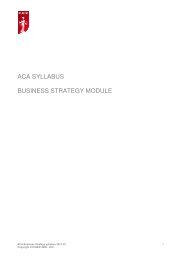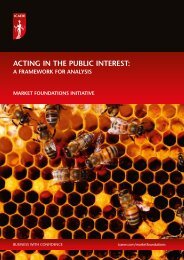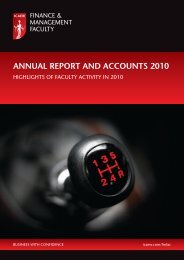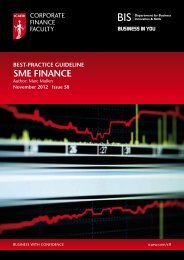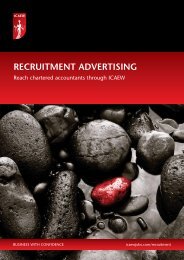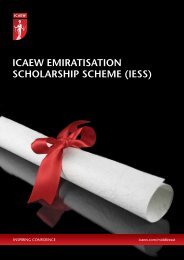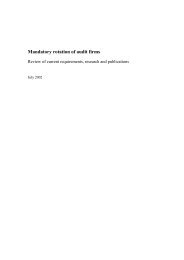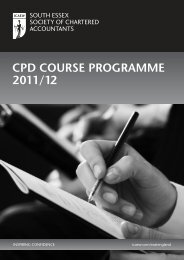Auditor independence and non-audit services - ICAEW
Auditor independence and non-audit services - ICAEW
Auditor independence and non-audit services - ICAEW
You also want an ePaper? Increase the reach of your titles
YUMPU automatically turns print PDFs into web optimized ePapers that Google loves.
2.2 Current regulatory frameworks: chapter 3Six <strong>audit</strong>or <strong>independence</strong> frameworks are reviewed, those for the UK, the US (SEC),Australia, EC, IFAC <strong>and</strong> Ontario. Apart from the US framework, which ispredominantly rule-based, with a set of prohibitions, a principles-based approach istaken. (The SEC framework sets out principles but these are outside the actual rules.)Independence is seen as a risk continuum, rather than an absolute, <strong>and</strong> judgmentsabout the seriousness of the threat to <strong>independence</strong> are balanced against theeffectiveness of the safeguards available. Five threats are identified: self-interest, selfreview,advocacy, familiarity or trust, <strong>and</strong> intimidation. There are four main sourcesof safeguards: the regulatory framework, the <strong>audit</strong> firm’s internal quality controls, theclient company’s corporate governance <strong>and</strong> refusal to act. Where no safeguard couldbe deemed adequate (such as an <strong>audit</strong>or taking management decisions) theframeworks contain a prohibition. In relation to the provision of NAS the threats areseen as wide-ranging. Only intimidation does not appear as a relevant threat. There isless convergence among the frameworks about the level of threat which arises frominternal <strong>audit</strong> <strong>and</strong> the installation of financial information systems than exists for theother threats. With the exception of the UK framework, where the recommendedupper level of economic dependence for a firm is defined (10% of total firm income,including NAS from one listed company client), the frameworks are generallyimprecise about an acceptable level of economic dependence for a firm, a specificoffice of a firm or an individual partner.With the exception of SEC which is directed only at listed companies, the frameworksrecognise that flexibility is needed in applying the principles to the <strong>audit</strong>ors of smallentities.The frameworks all identify the importance of both <strong>independence</strong> in fact (i.e.independent behaviour) <strong>and</strong> <strong>independence</strong> in appearance (i.e. the belief that <strong>audit</strong>orsare independent). The current benchmark for measuring <strong>independence</strong> in appearanceis what a well-informed investor or third party would believe. The threats <strong>and</strong>safeguards do not distinguish between the defence of <strong>independence</strong> in appearance <strong>and</strong><strong>independence</strong> in fact.2.3 Descriptive studies of the amount <strong>and</strong> type of NAS: chapter 5In some jurisdictions <strong>and</strong> time periods, there has been no requirement for companiesto disclose the total amount of NAS purchased from their <strong>audit</strong>or. Even where this is arequirement, there is generally no breakdown of the total by service type (e.g. UK). Inthese circumstances, evidence is collected via company surveys. This generates lessreliable data, due to the risk of response bias. In the UK, the ratio of <strong>non</strong>-<strong>audit</strong> to <strong>audit</strong>fees paid to the incumbent <strong>audit</strong>or has risen to 300% for the FTSE 100 companies (upfrom 98% in 1996). There is some evidence that taxation <strong>services</strong> predominate <strong>and</strong>that the overall ratio of NAS to <strong>audit</strong> fees is higher in the UK than in the US.2.4 Determinants of the purchase decision: chapter 6Researchers have investigated three aspects of the NAS purchase decision: the choicebetween the incumbent <strong>audit</strong>or or another provider; the types of service purchased;<strong>and</strong> the absolute <strong>and</strong> relative amounts of NAS. A major argument is that thosexi




